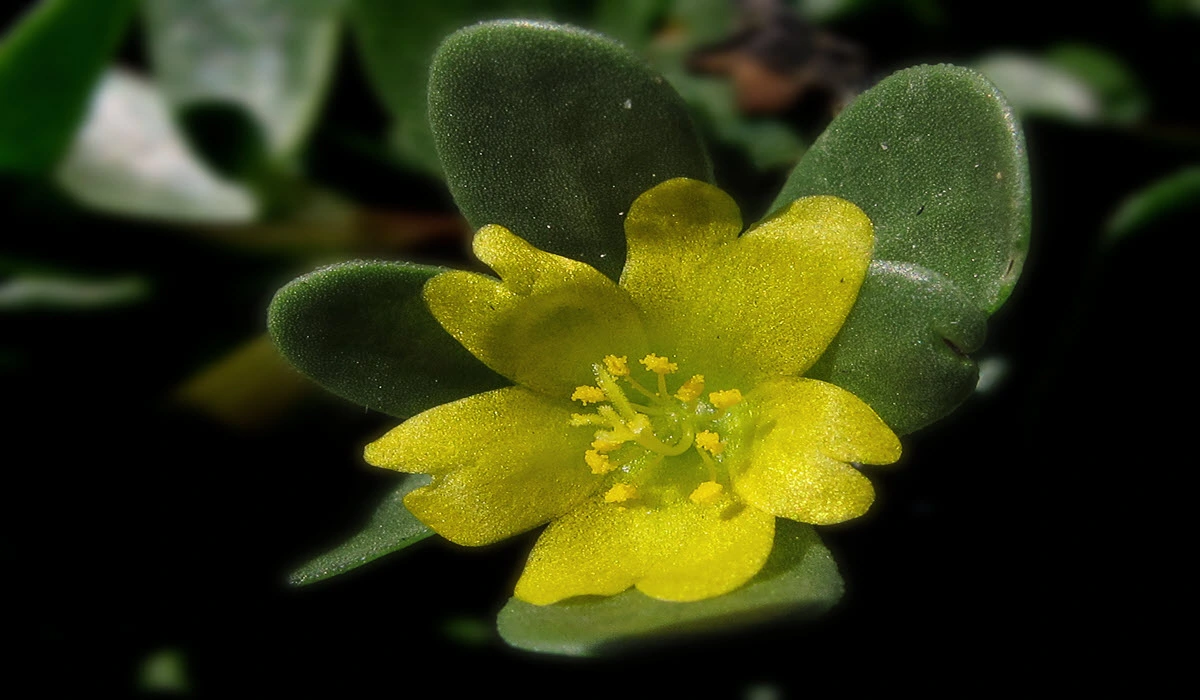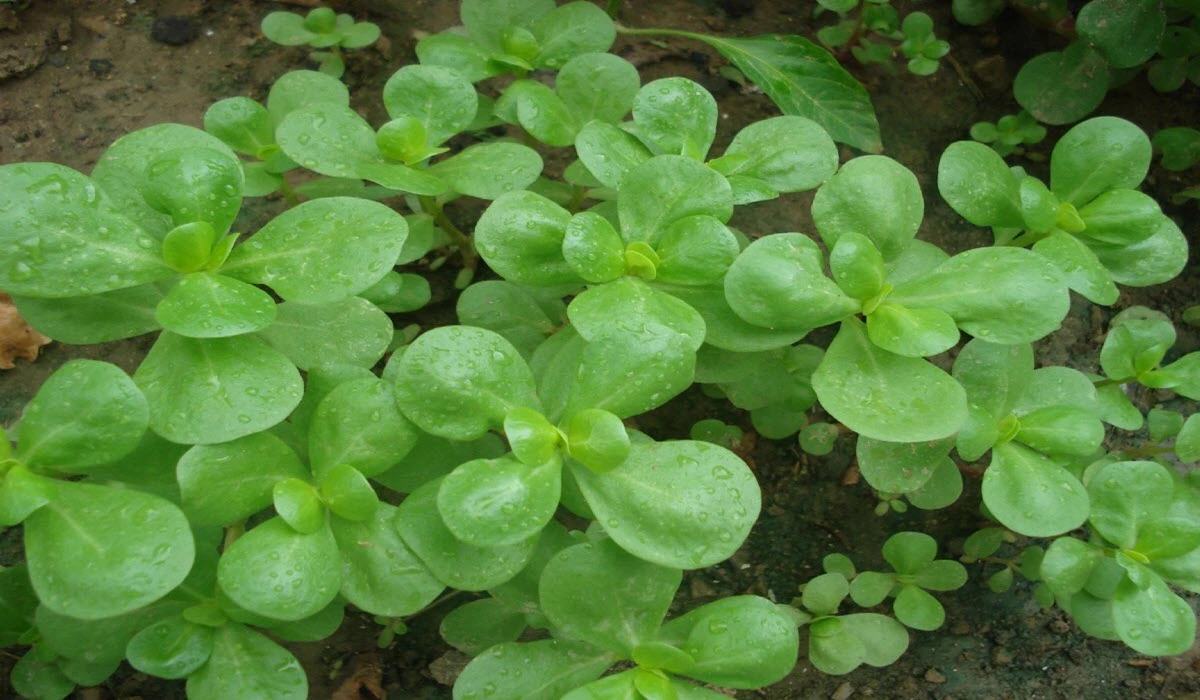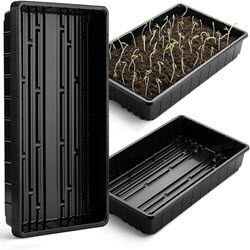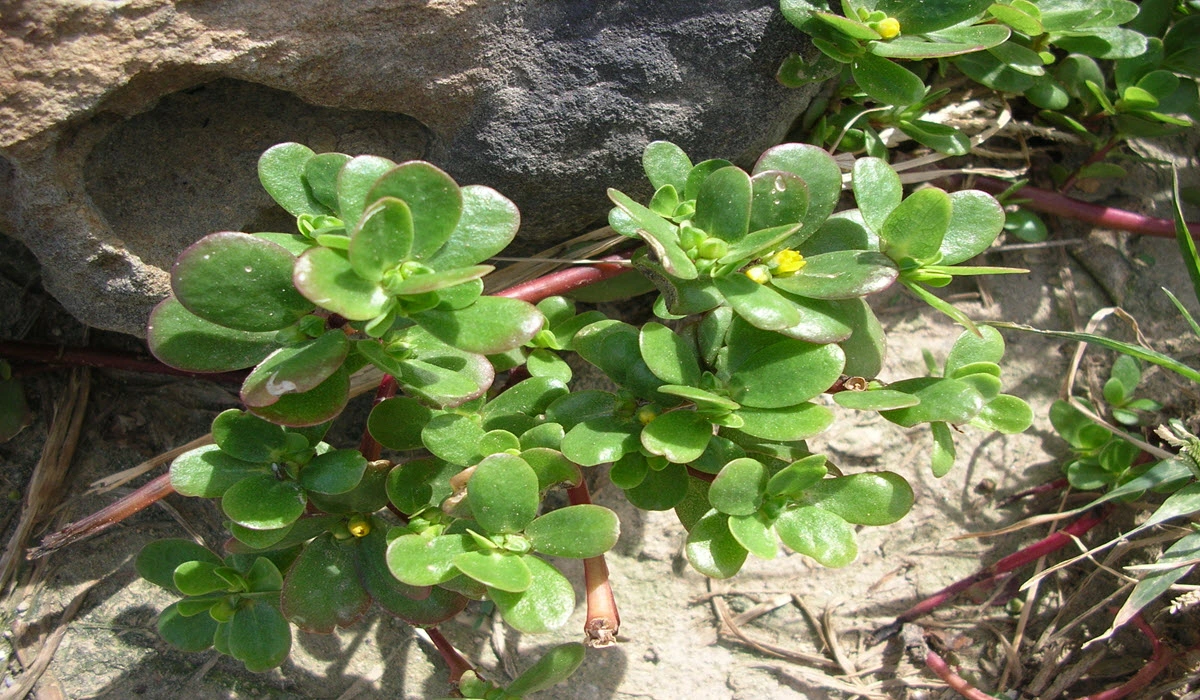In recent years, purslane (Portulaca oleracea) has gained popularity as a versatile and nutritious green. This succulent-like plant is not only delicious but also packed with essential nutrients and omega-3 fatty acids. Whether you’re an avid gardener or someone with limited gardening experience, growing purslane can be a rewarding and straightforward endeavor. In this article, we’ll explore how to grow purslane from seed, how to grow purslane indoor, how to grow purslane from cutting and purslane benefits.

Understanding Purslane
Purslane is an annual herb that thrives in warm climates, although it can tolerate a wide range of temperatures. It has succulent, smooth leaves that vary in shape and color, depending on the variety. Common Purslane is known for its mildly tangy flavor, which adds a unique twist to salads, stir-fries, and soups. Besides its culinary uses, this plant is also valued for its medicinal properties, including anti-inflammatory and antioxidant benefits.
Choosing the Right Growing Environment

Purslane prefers a sunny location with well-drained soil. It can tolerate poor soil conditions and is often found growing in cracks and crevices. If you’re growing purslane in pots or containers, ensure they have drainage holes to prevent waterlogging. Additionally, purslane can thrive in both traditional garden beds and raised beds, making it adaptable to various gardening setups.
Starting From Seeds

Purslane is commonly propagated from seeds, and rarely propagated from cutting. Purslane seeds are readily available at garden centers or online. To start growing common purslane from seed, sow them directly into the prepared soil after the last frost date in your area. The seeds are tiny, so sprinkle them lightly on the soil surface and gently press them down. Keep the soil consistently moist until germination, which typically takes around one to two weeks.
Soil Preparation and Care
Purslane prefers loose, well-draining soil. Before planting, loosen the soil and remove any weeds or debris. Consider enriching the soil with compost or organic matter to enhance its fertility. Water the plants regularly, but take care not to overwater as purslane can be prone to root rot. Applying a layer of mulch around the plants can help retain soil moisture and suppress weed growth.
Maintenance and Harvesting
Purslane is a low-maintenance plant, making it an excellent choice for busy gardeners. While it is drought-tolerant, consistent watering will promote healthier and more vigorous growth. Keep an eye out for pests such as aphids or snails, and address any infestations promptly.
You can begin harvesting purslane when the plants have reached about four to six inches in height, usually around six to eight weeks after planting. Snip off the leaves and tender stems as needed, leaving the plant intact for continuous regrowth. Harvesting purslane frequently encourages bushier growth and ensures a constant supply of fresh greens.
Culinary Adventures
Now comes the most exciting part—enjoying your homegrown purslane in a variety of culinary creations. The versatility of this green is impressive. Add purslane leaves to fresh salads, sandwiches, or wraps for a delightful crunch and tangy flavor. It can also be cooked and added to stir-fries, soups, stews, or sautés. Alternatively, blend purslane into smoothies or juices for an extra nutrient boost.

|
Mr. Pen- Plastic Growing TraysTMr. Pen- Plastic Growing Trays, 5 Pack, Black, Plant Tray, Seed Tray, Seedling Tray, Propagation Tray, Plant Trays for Seedlings, Planting Trays, Microgreens Growing Trays, Seedling Starter Trays |
Health Benefits of Purslane

Rich in Nutrients
Purslane is packed with essential vitamins and minerals. It is an excellent source of vitamins A, C, and E, which are powerful antioxidants that help protect the body against oxidative stress. Common Purslane also contains minerals like magnesium, calcium, potassium, and iron, which are vital for various bodily functions.
High Omega-3 Fatty Acids Content
One of the unique features of purslane is its high omega-3 fatty acid content, particularly alpha-linolenic acid (ALA). Omega-3 fatty acids are crucial for heart health, brain function, and reducing inflammation in the human body. Purslane is one of the few plant sources that provide significant amounts of these beneficial fatty acids.
Anti-Inflammatory Properties
Purslane contains compounds with potent anti-inflammatory effects. Research suggests that the presence of omega-3 fatty acids, as well as other bioactive substances like flavonoids and betalain pigments, contributes to its anti-inflammatory properties. Regular consumption of purslane may help reduce inflammation-related conditions such as arthritis and cardiovascular diseases.
Supports Heart Health
The omega-3 fatty acids found in purslane can have a positive impact on cardiovascular health. These healthy fats help lower blood pressure, reduce cholesterol levels, and decrease the risk of blood clot formation.

|
Gardening Gloves for Women and LadiesCOOLJOB Gardening Gloves for Women and Ladies, 6 Pairs Breathable Rubber Coated Yard Garden Gloves, Outdoor Protective Work Gloves with Grip, Medium Size Fits Most, Red & Green |
Antioxidant Benefits
Purslane is rich in antioxidants, which are compounds that help protect the body against cellular damage caused by free radicals. Free radicals are unstable molecules that can lead to chronic diseases and accelerate the aging process. The antioxidants in purslane, including vitamins A, C, and E, with other plant compounds, help neutralize these harmful free radicals and promote overall well-being.
Digestive Health
Purslane has been traditionally used to support digestive health. It contains dietary fiber, which aids in promoting healthy digestion, preventing constipation, and supporting regular bowel movements. The mucilaginous nature of purslane may also soothe and protect the gastrointestinal tract.
Weight Management
Including purslane in a balanced diet may aid in weight management. It is low in calories but rich in nutrients, making it a great choice for those aiming to lose or maintain weight. The fiber content in purslane helps promote satiety and reduces the likelihood of overeating.
Conclusion
Growing purslane is a rewarding experience for any gardener, whether you have a spacious backyard or a small balcony. With its vibrant and nutritious qualities, this versatile green adds a delightful touch to a wide range of dishes. By following this purslane grow guide, you’ll be well on your way to cultivating your own purslane and savoring.



Comments are closed.